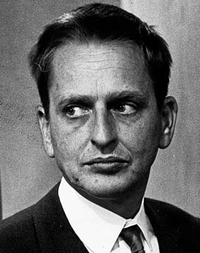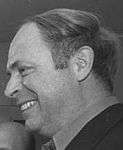Swedish general election, 1982
| | ||||||||||||||||||||||||||||||||||||||||||||||||||||||||||||||||||||||||||||||
| ||||||||||||||||||||||||||||||||||||||||||||||||||||||||||||||||||||||||||||||
| ||||||||||||||||||||||||||||||||||||||||||||||||||||||||||||||||||||||||||||||
| ||||||||||||||||||||||||||||||||||||||||||||||||||||||||||||||||||||||||||||||

General elections were held in Sweden on 19 September 1982.[1] They saw the return of the Swedish Social Democratic Party to power after six years in opposition, the longest period in opposition by the Social Democrats since the 1910s. The center-right coalition of Thorbjörn Fälldin had earlier suffered a loss upon the breakup of the government in 1981, the year before the election, when the rightist Moderate Party chose to withdraw from the government, protesting against the centrist tax policies of the Fälldin government. After regaining power, socialist leader Olof Palme succeeded in being elected Prime Minister again, having earlier held power between 1969 and 1976. He would retain this position successfully until his assassination in 1986.
Results
| Party | Votes | % | Seats | +/– |
|---|---|---|---|---|
| Swedish Social Democratic Party | 2,533,250 | 45.6 | 166 | +12 |
| Moderate Party | 1,313,337 | 23.6 | 86 | +13 |
| Centre Party | 859,618 | 15.5 | 56 | –8 |
| People's Party | 327,770 | 5.9 | 21 | –17 |
| Left Party Communists | 308,899 | 5.6 | 20 | 0 |
| Christian Democratic Unity | 103,820 | 1.9 | 0 | 0 |
| Green Party | 91,787 | 1.7 | 0 | New |
| Workers Party Communists | 5,745 | 0.1 | 0 | 0 |
| Other parties | 10,376 | 0.2 | 0 | 0 |
| Invalid/blank votes | 52,001 | – | – | – |
| Total | 5,606,603 | 100 | 349 | 0 |
| Registered voters/turnout | 6,130,993 | 91.4 | – | – |
| Source: Nohlen & Stöver | ||||
By municipality
-

Votes by municipality. The municipalities are the color of the party that got the most votes within the coalition that won relative majority.
-

Cartogram of the map to the left with each municipality rescaled to the number of valid votes cast.
-

Map showing the voting shifts from the 1979 to the 1982 election. Darker blue indicates a municipality voted more towards the parties that formed the centre-right bloc. Darker red indicates a municipality voted more towards the parties that form the left-wing bloc.
-

Votes by municipality as a scale from red/Left-wing bloc to blue/Centre-right bloc.
-

Cartogram of vote with each municipality rescaled in proportion to number of valid votes cast. Deeper blue represents a relative majority for the centre-right coalition, brighter red represents a relative majority for the left-wing coalition.


